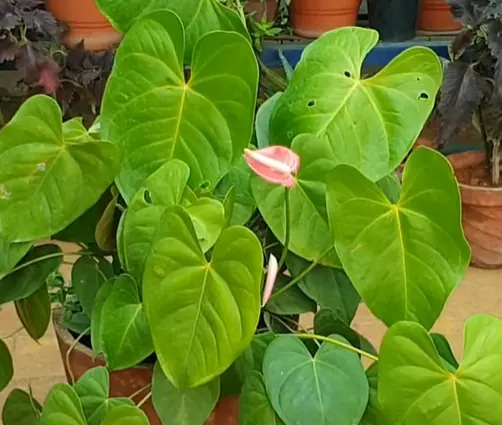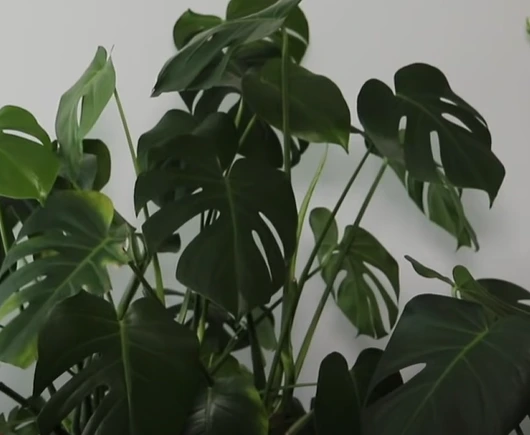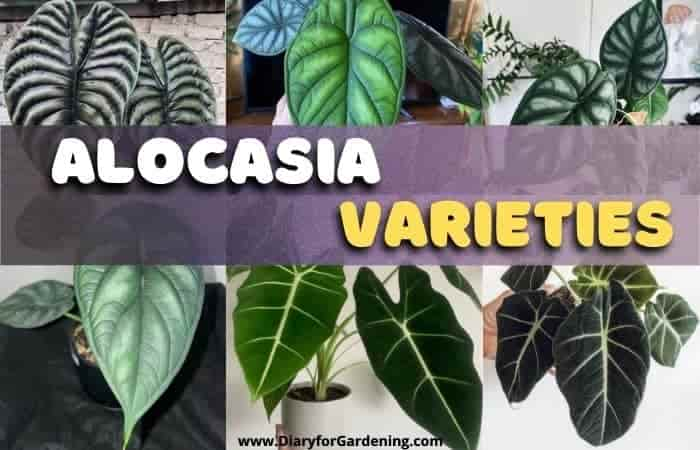15 popular vine with heart-shaped leaves (! with pictures)
Searching for some vine with heart-shaped leaves? Or want to know about the cordate shape?
Cordate or heart-shaped leaves normally take this structure in their margins. The plants which are consisted of such leaves may be different in leaf venation or other factors, but their margins are almost the same and that’s why they are called so.
To get rid of such a situation, scroll down and get the list of common heart-shaped leaves vines.
List of Popular Vine with heart-shaped leaves
Well, there are many trees, shrubs and herbs distributed all over the world which have such leaves. Some of them are common and some are not found easily. But whenever you are spoken to mention one of them, you may become confused. Some of the well-known heart-shaped leaves are selected below. Let’s start to learn about these plants in detail.
Philodendron scandens
Philodendron scandens or Philodendron hederaceum, also known as heart-leaf philodendron, sweetheart plant etc., is a plant native to Central America and the Caribbean. This plant is well-known as an ornamental plant all over the world. Let’s know the details about this plant.
Specifications
- Family- Araceae
- Plant type- Evergreen and perennial climbing plant
- Plant height- 3 to 6 meters(10 to 20 ft)
- Leaves- Heart-shaped leaves with glossy green color
- Stem- Climbing tendrils
- Flower- White-colored flower, but they are only seen in the matured plants
- Fruit- Insignificant
- Flowering time- Occasional
- Propagation- By stem cutting
- Light requirement- Bright and indirect
- Watering- Once or twice a week
- Optimum temperature- 65 to 80 degrees Fahrenheit
- Uses- As an ornamental plant
Tinospora Cordifolia
Next, we are going to discuss the Heart-leaved moonseed. You can also know it as Guduchi, giloy, amrita or gurjo in your localities. They originated from the tropical region of the Indian subcontinent. You may know that this plant has fame for being used in Ayurveda. Here you can get some more specs about it.

Specification
- Family- Menispermaceae
- Plant type- Deciduous climbing shrub
- Plant height- 3 meters long
- Leaves- simple, exstipulate, heart-shaped, alternate and green-colored
- Stem- Twining branches
- Flower- Greenish-yellow unisexual flowers produced in racemes
- Fruit- Red-colored small fruits
- Propagation- By stem cutting
- Light requirement- Bright and indirect light
- Watering- Once a week
- Uses- Home remedy for hepatitis and immune support.
Tinospora Crispa
Tinospora crispa is well-known as a medicinal plant all over the world. This plant is native to the Southern part of Asia though it is now distributed in various tropical and subtropical regions of the world. It is also known as petawali, makabuhai, liane-quinine etc.

Specifications
- Family- Memispermiaceae
- Plant type- Perennial and deciduous climber
- Plant height- 4 to 10 meters
- Leaves- Heart-shaped green leaves 6 to 12 cm long and 7 to 12 cm wide.
- Stem- Fleshy stem with numerous tubercles
- Flower- Small yellowish-green flowers
- Fruit- 7 to 8 mm long
- Propagation- By stem cutting
- Light requirement- Full sunshine
- Watering- twice or thrice a week
- Uses- Used for purifying blood and other medicinal usage.
Argyreia Nervosa
Here we present one more plant native to the Indian subcontinent. But the dispersal of this plant is quite larger than the other trees as these plants are found in Africa, Hawaii and the Caribbean areas. It can serve you through versatile sides. Hawaiian Baby Woodrose, adhoguda, vidhara, woolly morning creeper, elephant creeper etc. are the other names of this plant.

Specifications
- Family- Convolvulaceae
- Plant type- Perennial climber plant
- Plant height- 9 to 15 meters
- Leaves- Cordate or heart-shaped of 15 to 25 cm
- Stem- Younger stems are tomentose
- Flower- Pinkish or bluish flowers arranged in a raceme
- Fruit- Dry brown coloured fruits
- Propagation- By stem cutting
- Light requirement- Full sunshine
- Watering- twice a week
- Uses- Root works as a tonic for the brain and nerves. Besides, seeds are a good source of entheogenic properties.
Antigonon Leptopus
The Antigonon leptopus is another plant that possesses heart-shaped vines. Queen’s wealth, coral vine, coralita, bee bush, San miguelito vine etc. are the common names of this plant included in the buckwheat family. It originated from Mexico and is now widely cultivated all over the world.

Specifications
- Family- Polygonaceae
- Plant type- Plant height- Around 7 meters
- Leaves- Cordate leaves of 25 to 75 mm long
- Stem- Fast-growing climbing vine
- Flower- Pink or white flowers clustered in the rachis
- Flowering time- Spring to Autumn
- Fruit- Fruits are formed as an underground tuber
- Propagation- By stem cutting
- Light requirement- Bright light
- Watering- Moderate watering
- Uses- Fruits and seeds are used as edible portions
Ceropegia Woodii
It is an African plant native to South Africa, Zimbabwe and Eswatini. You can also know it as a chain of hearts, the collar of hearts, a string of hearts, hearts-on-a-string, a rosary vine etc. Though this plant is short in height, it has a wide spreading of 2-4 meters because of its trailing vines. Get some more information below-

Specifications
- Family- Apocynaceae
- Plant type- Succulent
- Plant height- 10 cm height
- Leaves- Heart-shaped leaves 1-2 cm long
- Stem- trailing vine
- Flower- Off-white and pale magenta color
- Fruit-
- Propagation- By stem cutting
- Light requirement- A combination of bright indirect light and partial shading is needed in outdoors
- The watering- little amount of water is needed
- Temperature- Around 25° celsius
- Uses- Used for ornamental purposes.
Smilax aspera
Rough bindweed, sarsaparilla, Mediterranean smilax etc. are the other names of this flowering plant included in the Greenbrier family. You can find this plant widely in Central Africa. Apart from those, you may also get it in temperate and tropical regions of Asia. Get the specs of this plant below-

Specifications
- Family- Smilacaceae
- Plant type- Perennial and evergreen plant
- Plant height- 1 to 4 meters
- Leaves- 8-10 centimeters long heart-shaped leaves
- Stem- Flexible stem consisting of thorns
- Flower- Yellowish flowers arranged in a raceme
- Fruit- Globosoe berries which remain clustered
- Propagation- By stem cutting
- Light requirement- Full sunshine, but sometimes semi-shade is also required
- Watering- Water when the soil is dried
- Uses- Used in the ayurvedic production of medicines for tumours, cancer, rheumatism etc.
Devil’s ivy
If you want to know about a common houseplant, you should mention the name of Devil’s ivy or Epipremnum aureum. Though it is a plant native to France, you can get it in various temperate, tropical and subtropical regions like South Africa, Australia, West Indies etc.
Along with devil’s ivy, people love it as the name of golden pothos. Apart from these, money plants, Ceylon creeper, marble queens, hunter’s robe, devil’s vine etc. are also well-known names of this plant. Let’s get the details about this plant.

Specifications
- Family- Araceae
- Plant type- Evergreen vine
- Plant height- Maximum 20 meters
- Stem- Climbing using aerial roots
- Leaves- Green-colored leaves with golden strips having a cordate shape
- Flower- Induced flowers produced in a spathe
- Fruit- Insignificant
- Blooming time- Occasionally after several years
- Light requirement- Bright indirect light
- Watering- Once a week
- Temperature- 18 to 24 degrees Celsius
- Uses- Used as an ornamental plant
Philodendron Gloriosum
Philodendron gloriosum is native to Colombia. It is a slow-growing plant found frequently in humid areas. The large leaves are the main attractions of this plant.

Specifications
- Family- Araceae
- Plant type- Crawling terrestrial plant
- Plant height- Around 3 feet
- Stem- Vertically growing stem
- Leaves- Cordate shaped having a large pink margin and greenish leaf!
- Flower- White flowers
- Blooming time- Spring
- Fruit- Insignificant
- Light requirement- Indirect light
- Watering- Watering is needed when soil becomes dry
- Uses- Used as an ornamental plant
Philodendron Micans
Here, we have another plant native to Mexico and Caribbean region called Philodendron mican which is a famous houseplant all over the world. You can decorate your house beautifully by placing this plant in the corner of your room. Let’s know about them in detail. Its other name is velvetleaf philodendron.

Specifications
- Family- Araceae
- Plant type- Perennial type
- Plant height- 8 inches to 24 inches
- Stem- Climbing vines
- Leaves- Heart-shaped leaves of gentle green color
- Flower- Green and white flowers
- Fruit- Insignificant
- Blooming time- Spring
- Watering- Watering is needed when the soil becomes dry
- Light requirement- Partial sun exposure is needed but that should be indirect light
- Uses- Used as an ornamental plant.
Anthurium
Anthurium may be called the largest genus of the arum family. You can also find it as laceleaf, tailflower, flamingo flower etc. in different regions. Like many species, it also has its origin in America. But it is well spread in Mexico, Argentina, Caribbean areas etc. The heart-shaped leaves and different flowers enhance its priority.

Specifications
- Family- Araceae
- Plant type- Epiphytes or terrestrial herbs
- Plant height- Several inches
- Stem- Trailing vines
- Leaves- Heart-shaped leaves of green colored
- Flower- Red flowers are arranged in a spadix
- Fruit- Insignificant
- Blooming time- Spring
- Watering- Once a week. They can store water in their fleshy roots
- Light requirement- Sun exposure and shady conditions both are needed
- Uses- Good as indoor plants.
Monstera deliciosa
The Swiss- Cheese plant or Split-leaf philodendron is known as Monstera deliciosa. This plant is native to Mexico. But nowadays, you can find it in Hawaii, Seychelles, Society Island etc. various places. It is mainly found as a houseplant in temperate regions.

Specifications
- Family- Araceae
- Plant type- Hemiepiphyte plant having aerial roots
- Plant height-20 m(66 ft)
- Leaves- Heart-shaped leaves of 25 to 90 cm which are green
- Flower- Yellowish-white flowers arranged in a cream-white inflorescence called the spathe
- Fruit- 25 cm long fruit
- Watering- When the soil is dried, watering will be needed
- Light requirement- Bright and indirect light
- Uses- Used as ornamental plants.
Hemionitis arifolia
You can also find a heart-shaped leaved plant in fern species and one of those is Henionitis arifolia. It is also known as heart fern, heartleaf fern, tongue fern etc. It is mainly found in the tropical moist region. It mainly originated from Southeast Asia.

Specifications
- Family- Pteridaceae
- Plant type- Epiphytic plant
- Plant height- 6 to 10 inches long
- Stem- Firm and wire-like stems
- Leaves- Dark green colour which are 2 to 3 inches long at maturity
- Flower- Rare
- Fruit- Insignificant
- Watering- Watering should be done when the soil is dry
- Light requirement- Bright and indirect light. Direct light is strictly prohibited. The shady condition can also be tolerable for them
- Temperature requirement- 15° Celsius
- Uses- Used for medicinal purposes for the treatment of cancer.
Syngonium
Syngonium is a genus, containing flowering plants, that are native to tropical forests of Mexico, South America, West Indies etc. areas. You can put a Syngonium plant easily in a hanging basket using it as a houseplant.

Specifications
- Family- Araceae
- Plant type- Woody vine
- Plant height-10 to 20 m height
- Stem- Trailing vine
- Leaves- Heart-shaped green leaves
- Flower- Rare
- Fruit- Insignificant
- Watering- Watering once a month
- Light requirement- Bright indirect light
- Uses- Used as an ornamental plant.
Hoya kerrii
Do you know any plant called lucky-heart? Here it is described. Hoya kerrii is a plant native to South China, Vietnam, Lous etc.

Specifications
- Family- Apocynaceae
- Plant type- Climbing plant
- Plant height- 4 meters high
- Leaves- 6 cm long leaves
- Flower- Reddish-brown flowers are arranged in an inflorescences
- Fruit- Insignificant
- Watering- Watering is needed when the soil is dry
- Light requirement- Bright indirect light
- Uses- Used as an ornamental plant
Final thoughts
Meanwhile, we have reached the final point of our discussion. The vine with heart-shaped leaves is not only significant for their appearances but also they are helpful for various purposes. You can find the solution to multiple problems from them.
If you want to decorate your room with such a plant then bring it immediately before it runs out. The different shapes will give your room different shades of waviness.
Here you can also read our article on Plants with 5 leaves per stem.



![These are 14 Trees with Fern-like Leaves [Pictures & Details]](https://diaryforgardening.com/wp-content/uploads/2022/02/Trees-with-fern-like-Leaves.jpg)
![12 amazing plants with 5 leaves per stem- [with pictures]](https://diaryforgardening.com/wp-content/uploads/2022/05/Plants-with-5-leaves-per-stem.jpg)


